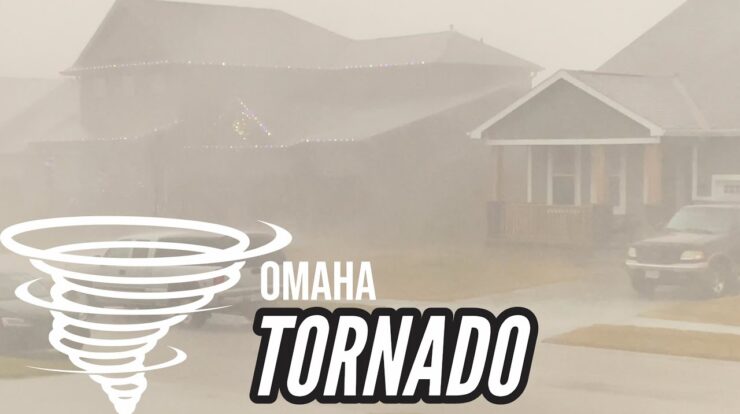
Tornado omaha nebraska today – Tornadoes in Omaha, Nebraska, have been a persistent threat to the city and its residents. With a history of severe tornadoes, it is crucial to understand the risks, safety measures, and preparedness strategies to mitigate their impact. This comprehensive guide delves into the frequency, severity, and historical data of tornadoes in Omaha, providing valuable insights for residents and visitors alike.
From safety guidelines during tornado warnings to the importance of emergency plans and supplies, this guide covers all aspects of tornado preparedness. It also explores the mechanisms of tornado detection and tracking, highlighting the role of weather radar and spotter networks in providing timely warnings.
Tornado History in Omaha, Nebraska
Omaha, Nebraska, has a long and well-documented history of tornadoes. The city has been struck by numerous tornadoes over the years, some of which have caused significant damage and loss of life.
The most notable tornado to hit Omaha was the Omaha tornado of 1913. This F4 tornado struck the city on May 23, 1913, and caused widespread damage. The tornado killed 103 people and injured over 500. It is considered one of the deadliest tornadoes in Nebraska history.
Other notable tornadoes that have hit Omaha include the Omaha tornado of 1958, the Omaha tornado of 1969, and the Omaha tornado of 2003. These tornadoes all caused significant damage and loss of life.
Tornado Frequency and Severity, Tornado omaha nebraska today
Tornadoes are relatively common in Omaha. The city is located in the Great Plains, which is a region of the United States that is known for its frequent tornado activity. On average, Omaha experiences about two tornadoes per year.
The severity of tornadoes in Omaha can vary greatly. Some tornadoes are weak and cause little damage, while others are strong and can cause widespread destruction. The most severe tornadoes are typically rated EF4 or EF5 on the Enhanced Fujita Scale.
Tornado Safety and Preparedness
Tornadoes can be dangerous and unpredictable, so it is important to be prepared in case one strikes. Here are some safety guidelines for residents during a tornado warning:
- Seek shelter in a sturdy building.
- Go to the lowest level of the building and stay away from windows.
- If you are outside, lie down in a ditch or other low-lying area and cover your head with your hands.
- Stay informed about the weather forecast and be prepared to take action if a tornado warning is issued.
It is also important to have an emergency plan and supplies in case of a tornado. Your emergency plan should include:
- A place to go for shelter.
- A way to communicate with family and friends.
- A supply of food and water.
- A first-aid kit.
Tornado Detection and Tracking
Tornadoes are detected and tracked using a variety of methods, including:
- Weather radar
- Spotter networks
Weather radar is a powerful tool that can detect tornadoes and track their movement. Radar can also provide information about the size and intensity of tornadoes.
Spotter networks are groups of trained volunteers who report tornadoes and other severe weather events to the National Weather Service. Spotters can provide valuable information about the location and movement of tornadoes, which can help to improve tornado warnings.
Tornado Impacts and Damage

Tornadoes can cause a variety of impacts, including:
- Property damage
- Injuries
- Fatalities
Property damage from tornadoes can range from minor to severe. Tornadoes can damage or destroy homes, businesses, and other structures. They can also uproot trees, power lines, and other objects.
Tornadoes can also cause injuries and fatalities. The most common injuries from tornadoes are caused by flying debris. Tornadoes can also cause blunt force trauma, crush injuries, and other serious injuries.
Fatalities from tornadoes are relatively rare, but they do occur. The most common cause of death from tornadoes is blunt force trauma. Tornadoes can also cause death by asphyxiation, drowning, and other causes.
Tornado Climatology and Forecasting: Tornado Omaha Nebraska Today
Tornadoes are most common in the Great Plains, but they can occur anywhere in the United States. Tornadoes are most likely to occur in the spring and summer months, but they can occur at any time of year.
The climatology of tornadoes is influenced by a variety of factors, including:
- Wind shear
- Instability
- Moisture
Wind shear is the difference in wind speed and direction between two levels of the atmosphere. Wind shear can help to create the rotating updrafts that are necessary for tornado formation.
Instability is a measure of how likely the atmosphere is to produce updrafts. Unstable air is more likely to produce updrafts that can lead to tornado formation.
Moisture is necessary for tornado formation. The moisture in the atmosphere provides the energy that drives the updrafts that create tornadoes.
Tornado forecasting is a challenging task, but it has improved significantly in recent years. The National Weather Service now issues tornado warnings for areas that are at risk of being hit by a tornado. These warnings are based on the latest weather data and forecasting models.
Tornado Research and Mitigation
There is a great deal of ongoing research into tornadoes. Scientists are working to better understand how tornadoes form and how to predict them more accurately. This research is helping to improve tornado warnings and mitigation strategies.
There are a number of different tornado mitigation strategies that can be used to reduce the risk of damage and injuries from tornadoes. These strategies include:
- Building codes
- Tornado shelters
- Public education
Building codes can be used to require new buildings to be constructed in a way that makes them more resistant to tornadoes. Tornado shelters can provide a safe place for people to go during a tornado warning. Public education can help people to understand the risks of tornadoes and how to stay safe.
Concluding Remarks

Tornadoes pose significant risks to Omaha, Nebraska, and its inhabitants. Understanding the climatological factors influencing tornado formation and the challenges in forecasting them is essential for effective mitigation strategies. Ongoing research and advancements in tornado mitigation offer hope for reducing the devastating impacts of these powerful storms.
By embracing preparedness measures, utilizing early warning systems, and staying informed about tornado risks, communities can enhance their resilience and minimize the consequences of future tornado events.
FAQ Explained
How frequent are tornadoes in Omaha, Nebraska?
Omaha, Nebraska, experiences an average of 2-3 tornadoes per year, with varying degrees of severity.
What is the most severe tornado that has impacted Omaha, Nebraska?
The most severe tornado to hit Omaha, Nebraska, was an F4 tornado that occurred on June 24, 1958, causing extensive damage and fatalities.
What are the key safety guidelines to follow during a tornado warning?
During a tornado warning, seek immediate shelter in a basement or interior room on the lowest floor of a sturdy building, away from windows and exterior walls.
How are tornadoes detected and tracked?
Tornadoes are detected and tracked using weather radar, spotter networks, and other meteorological tools that monitor atmospheric conditions and identify potential tornado formation.
What are the potential impacts of tornadoes?
Tornadoes can cause significant property damage, injuries, and fatalities. They can also disrupt infrastructure, power lines, and communication networks.





